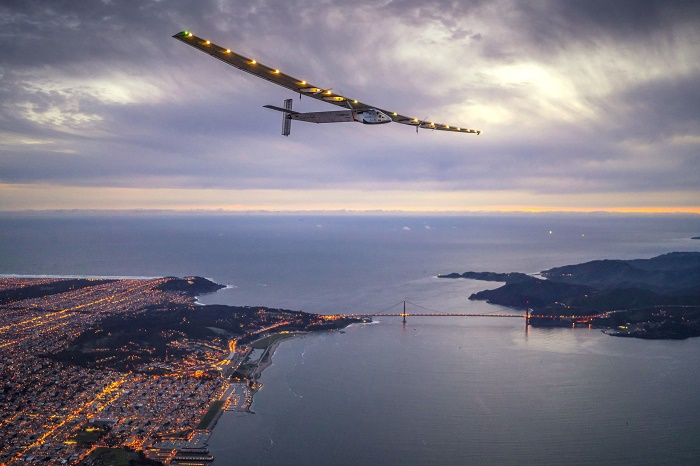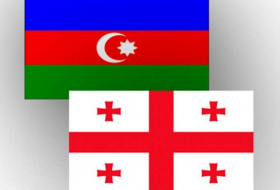The landing in Seville marked the end of the 15th stage of Solar Impulse `s route.
Pilot Bertrand Piccard made swift progress over the ocean after leaving New York on Monday.
Mission managers will now plot a route to Abu Dhabi where the venture began in March, 2015.
The project had hoped to end the Atlantic leg in Paris, to echo the pioneering flight in 1927 of Charles Lindbergh.
Lindbergh`s Spirit of St Louis aircraft was the first to make the solo crossing.
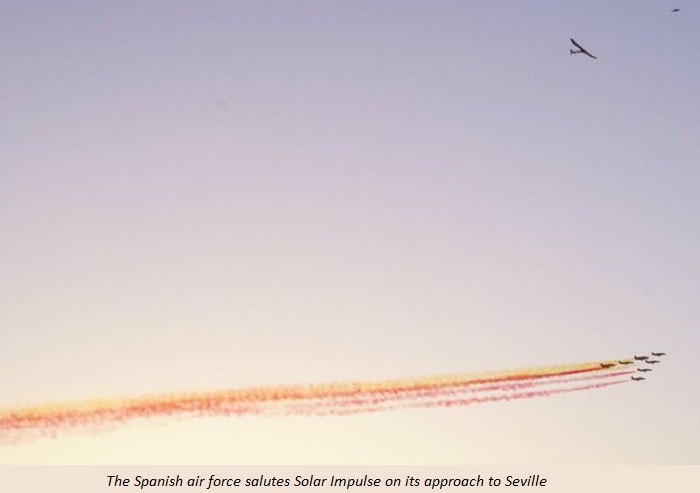
As it turned out, the forecast this week in Paris was for storms, and so Seville was therefore chosen as the safest option, the BBC`s science correspondent, Jonathan Amos, reports.
Solar Impulse has moved rapidly around the Earth since renewing its challenge in Hawaii on 21 April.
In 2015, the plane flew eight stages from Abu Dhabi to Kalaeloa, including a remarkable four-day, 21-hour leg over the western Pacific - the longest solo flight in aviation history in terms of the time it took.
But it was damage to its batteries on that stage that forced Solar Impulse to then lay up for 10 months, for repairs and to wait for optimum daylight length in the northern hemisphere to return.
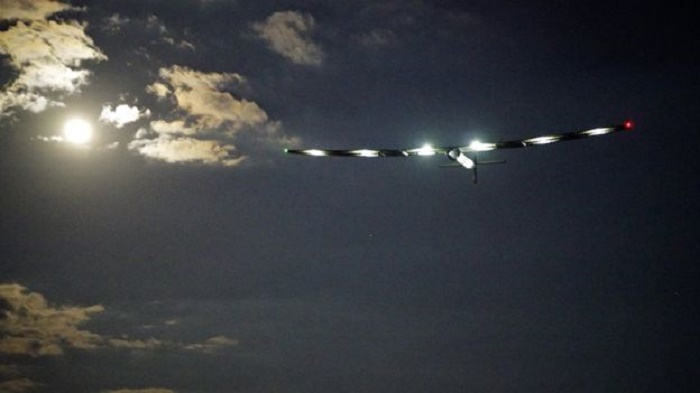
Solar Impulse is covered in 17,000 photovoltaic cells.
These either power the vehicle`s electric motors directly, or charge its lithium-ion batteries, which sustain the aircraft during the night hours.
The project is not really intended to be a template for the future of aviation, but rather a demonstration of the capabilities of solar power in general.
Mr Piccard shares the flying duties with his business partner, Andre Borschberg.
The former Swiss air force pilot will take charge for the next leg, across the Mediterranean.
Setting off from Seville will be easier than from Paris in this respect, said project team-member Yves Andre Fasel who liaises with air traffic control.
"If we would have arrived in Paris like we wished, it would have been very complicated because we would have had to cross a lot of air traffic controls.
"From Seville, if we go along North Africa, I don`t think there will be a lot of difficulties - from traffic. The difficulties will be more to do with military reasons and things like that."
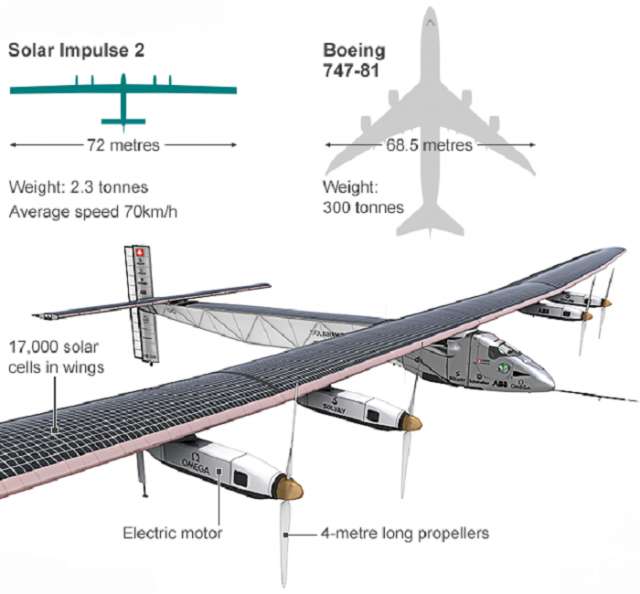
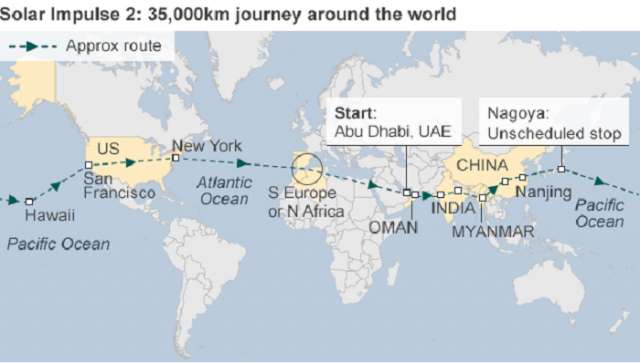
LEG 1: 9 March. Abu Dhabi (UAE) to Muscat (Oman) - 772km; 13 Hours 1 Minute.
LEG 2: 10 March. Muscat (Oman) to Ahmedabad (India) - 1,593km; 15 Hours 20 Minutes.
LEG 3: 18 March. Ahmedabad (India) to Varanasi (India) - 1,170km; 13 Hours 15 Minutes.
LEG 4: 18 March. Varanasi (India) to Mandalay (Myanmar) - 1,536km; 13 Hours 29 Minutes.
LEG 5: 29 March. Mandalay (Myanmar) to Chongqing (China) - 1,636km; 20 Hours 29 Minutes.
LEG 6: 21 April. Chongqing (China) to Nanjing (China) - 1,384km; 17 Hours 22 Minutes.
LEG 7: 30 May. Nanjing (China) to Nagoya (Japan) - 2,942km; 1 Day 20 Hours 9 Minutes.
LEG 8: 28 June. Nagoya (Japan) to Kalaeloa, Hawaii (US) - 8,924km; 4 Days 21 Hours 52 Minutes.
LEG 9: 21 April. Kalaeloa, Hawaii (US) to Mountain View, California (US) - 4,523km; 2 Days 17 Hours 29 Minutes.
LEG 10: 2 May. Mountain View, California (US) to Phoenix, Arizona (US) - 1,199km; 15 Hours 52 Minutes.
LEG 11: 12 May. Phoenix, Arizona (US) to Tulsa, Oklahoma (US) - 1,570 km; 18 Hours 10 Minutes.
LEG 12: 21 May. Tulsa, Oklahoma (US) to Dayton, Ohio (US) - 1,113 km; 16 Hours 34 Minutes.
LEG 13: 25 May. Dayton, Ohio (US) to Lehigh Valley, Pennsylvania (US) - 1,044 km; 16 Hours 47 Minutes.
LEG 14: 11 June. Lehigh Valley, Pennsylvania (US) to New York (US) - 230km; 4 Hours 41 Minutes.
LEG 15: 20 June. New York (US) to Seville (Spain).
More about:








